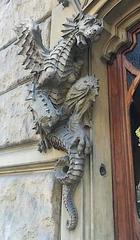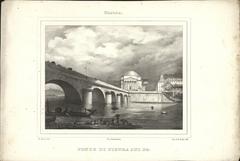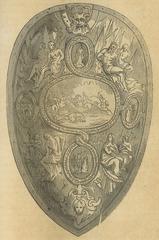Comprehensive Guide to Visiting Istituto Bancario San Paolo di Torino, Chieri, Italy
Date: 31/07/2024
Introduction
The Istituto Bancario San Paolo di Torino, commonly known as San Paolo, is a historical banking institution that traces its roots back to the 16th century. Initially established as the Monte di Pietà in 1563 in Turin, Italy, it was formed with the noble aim of providing financial assistance to those in need, laying a foundation of social welfare that would persist through its evolution. Over centuries, the Monte di Pietà transitioned from a charitable organization into a structured financial institution, playing a crucial role in the economic and social development of the Piedmont region and beyond (Intesa Sanpaolo History) (Istituto Bancario San Paolo di Torino).
This comprehensive guide aims to provide an in-depth look at the Istituto Bancario San Paolo di Torino, exploring its rich history, significant contributions to the banking sector, and practical visitor information. Whether you are a history enthusiast, a banking professional, or a tourist eager to uncover Turin’s cultural heritage, this guide offers valuable insights and essential tips for visiting this iconic institution.
Table of Contents
- Introduction
- History of Istituto Bancario San Paolo di Torino
- Visitor Information
- Nearby Attractions
- FAQ
- Conclusion
History of Istituto Bancario San Paolo di Torino
Origins and Early Development
The Istituto Bancario San Paolo di Torino was originally founded in 1563 as the Monte di Pietà in Turin, Italy. Established as a charitable institution, its primary aim was to provide financial assistance to the needy. This early focus on social welfare laid the foundation for the bank’s long-standing commitment to community support and development.
Evolution into a Modern Bank
Over the centuries, the Monte di Pietà evolved into a more structured financial institution. By the 19th century, it had expanded its services beyond charitable loans to include a broader range of banking activities. This transformation was crucial in establishing San Paolo as a significant player in the Italian banking sector.
Merger with IMI
In 1998, a pivotal moment in the bank’s history occurred when it merged with the Istituto Mobiliare Italiano (IMI). Founded in 1931, IMI was a public entity supporting the reconstruction of Italy’s industrial system after the Great Depression. The merger created Sanpaolo IMI, combining retail lending expertise with strong business and investment banking capabilities (Intesa Sanpaolo History).
Expansion and Acquisitions
Following the merger, Sanpaolo IMI grew both organically and through strategic acquisitions, including the acquisition of Banco di Napoli in 2000. This significantly expanded Sanpaolo IMI’s presence in southern Italy. The bank also entered into the share capital of Cassa dei Risparmi di Forlì e della Romagna and formed strategic alliances with other leading Italian and foreign banking institutions (Intesa Sanpaolo History).
Integration with the Cardine Group
Between 2001 and 2002, Sanpaolo IMI integrated with the Cardine Group, bringing together seven banks operating in northeastern Italy and along the Adriatic coast. This integration strengthened Sanpaolo IMI’s regional presence (Intesa Sanpaolo History).
Formation of Intesa Sanpaolo
The most significant transformation came in 2007 when Sanpaolo IMI merged with Banca Intesa to form Intesa Sanpaolo. This merger created one of the largest banking groups in Italy and Europe, with a strong presence in retail, corporate, and investment banking (Intesa Sanpaolo History).
Recent Developments
In recent years, Intesa Sanpaolo has continued to expand its operations. In 2020, the bank acquired control of UBI Banca, further consolidating its presence in the Italian banking sector. The merger was completed in 2021 (Intesa Sanpaolo History).
Visitor Information
For those interested in exploring the history of Istituto Bancario San Paolo di Torino, a visit to Turin is essential. Below is practical information to help plan your visit.
Key Historical Sites
- Monte di Pietà Building: The original building of the Monte di Pietà, founded in 1563, offers a glimpse into the early days of the institution and its charitable roots.
- San Paolo Museum: This museum provides an in-depth look at the bank’s evolution, including artifacts, documents, and exhibits.
- Guided Tours: Consider taking a guided tour of historical landmarks associated with San Paolo. These tours provide valuable insights and anecdotes.
Practical Information
- Location: Main historical sites are located in Turin, Italy.
- Opening Hours: Check official websites or local tourist information centers for up-to-date information on opening hours and guided tour schedules.
- Tickets: Information on ticket prices can be found on the official websites.
- Accessibility: Most historical sites and museums in Turin are accessible to visitors with disabilities. Confirm accessibility options in advance.
Nearby Attractions
While in Turin, consider visiting other historical sites such as the Mole Antonelliana, the Royal Palace of Turin, and the Egyptian Museum. These landmarks offer a broader context of the city’s rich cultural heritage.
FAQ
- What are the visiting hours for the San Paolo Museum?
- Visiting hours vary; check the official website for the most current information.
- Are there any special events or guided tours available?
- Yes, special events and guided tours are often available. Check the official website or local tourist information for details.
- How can I purchase tickets?
- Tickets can typically be purchased online through the official website or at the venue.
Conclusion
The Istituto Bancario San Paolo di Torino holds a significant place in the history of Italian banking. Its origins as a charitable institution reflect a long-standing commitment to social responsibility. Over the centuries, the bank has evolved into a modern financial institution, playing a crucial role in the development of Italy’s banking sector. Don’t miss the chance to explore its rich history and significant contributions to the community. For more updates, follow us on social media or download our mobile app Audiala.
References
- Intesa Sanpaolo History. (n.d.). Retrieved from https://group.intesasanpaolo.com/en/about-us/history
- Istituto Bancario San Paolo di Torino. (n.d.). Retrieved from https://it.wikipedia.org/wiki/Istituto_Bancario_San_Paolo_di_Torino
- Intesa Sanpaolo History: Sanpaolo Torino. (n.d.). Retrieved from https://group.intesasanpaolo.com/en/about-us/history/sanpaolo-torino
- Compagnia di San Paolo. (n.d.). History. Retrieved from https://www.compagniadisanpaolo.it/en/The-Foundation/History/
- Intesa Sanpaolo Mappa Storica. (n.d.). Details. Retrieved from https://mappastorica.intesasanpaolo.com/bank/detail/IT-ISP-MAPPAITALIA-0000174/istituto-bancario-san-paolo-torino








